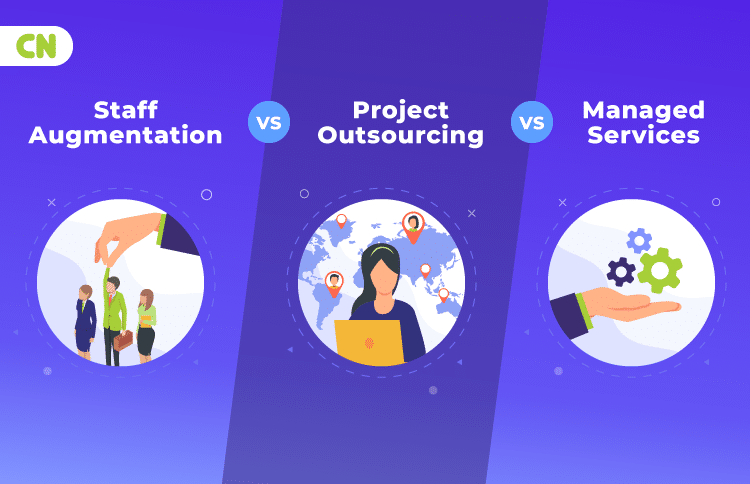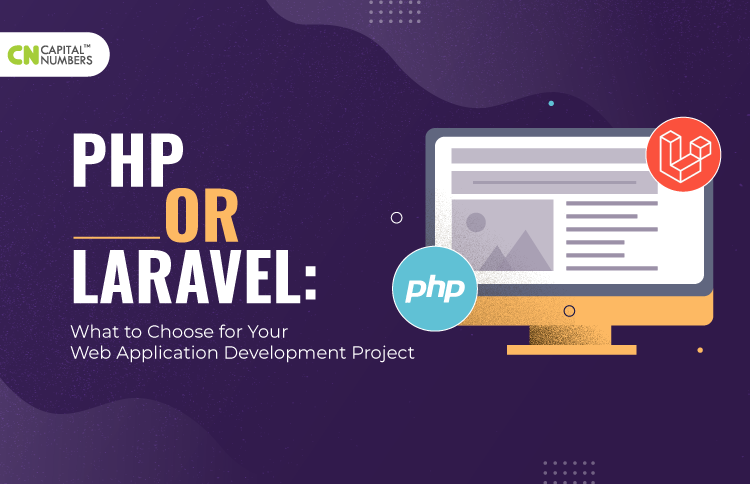Staff Augmentation vs Project Outsourcing vs Managed Services
Table of Contents
IT Outsourcing has become a norm in the present age of technological advancement. As a business owner, you possess a constant urge to reduce overall costs and create an improvement in operational efficiencies with the help of technology.
In this era of rapid technological progress, if you do not keep pace and if you fail to deliver projects on time, you will lose out on lucrative business opportunities. Often, you might not even have in-house resources for projects that require niche skill sets. So, what do you do in such a situation? Well, there are three cooperation models that you can consider. These models help you outsource your projects to professionals who have in-depth knowledge in specific domain areas. These three models are:
- Staff Augmentation
- Project Outsourcing
- Managed Services
This blog will further inform you about the differences between the three major ways of IT outsourcing.
Three Main Processes of IT Outsourcing
Staff Augmentation
This is a process in which you need to hire an external team of employees. These employees will work on a particular part of your IT project. This can benefit you since an extended team will complement the knowledge and skills of your existing team. With the implementation of this process, you can hire employees with specific competencies.
Staff augmentation will allow you to add staff members to your existing team of employees, based on the additional support needed to complete a project.
Project Outsourcing
You might come across projects which need a collaboration of designers, developers, and marketers. In such cases, hiring only a handful of employees externally might not work. During such situations, you might need to hire an entire agency to get the work done.
In the case of project outsourcing, you will be free of any kind of worries regarding the completion of a particular project. “The project outsourcing approach allows companies the benefits of external expertise, cost management, and risk mitigation so they can concentrate existing resources on their core operations,” said David Kocs, Principal, TDK Technologies.
Managed Services
This particular type of cooperation is quite similar to project outsourcing, however, it has its differences as well. This type of cooperation is generally long term. In this model, you, as a client, outsource your project to an agency for the maintenance of a range of processes or specialized applications, so that your IT resources can focus on your business’ core competencies.
To successfully implement these methods of IT outsourcing, you must also keep a tab on how they are different from each other in terms of the factors mentioned below.
Key Factors to Note
Expenses
This is a segment that you should be most interested in. After all, the amount of money you earn after completing a particular project should be more than the amount you spend on it, right? The three models have different economic viability.
Project outsourcing is perhaps the most efficient model if you want to create a proper balance between expense and quality. Here, you outsource the entire IT project to an agency, thus relieving yourself from the hassle of completing the project. You also free yourself from the expenses required for training a group of employees.
On the other hand, during staff augmentation, you hire a specific number of employees who work as an extended part of your team. The total amount of money required to hire a group of employees will also increase based on their experience.
Managed services are the model which you should consider only when you are aiming for a long-term outcome. This model definitely will increase your overall expense but can help you earn profits in the long run.
Control
When you own a business, you do want to have control over it. You obviously want to be constantly informed about the manner a particular IT project progresses, this, however, is not possible in all three models.
Project outsourcing requires you to depend on an external agency for the completion of your project. This, in turn, means that the agency will take the decisions involved in the project completion. You will not have any control whatsoever if you choose this cooperation model.
The main difference between staff augmentation and managed services is that the later is long-term, while the former is temporary. In both cases, you own control over your projects.
Responsibility
You are responsible for the overall long-term failure or success of your business. However, there are instances when you want to free yourself from the responsibility of certain projects.
If you embrace the staff augmentation model, you will have the responsibility of making sure that the project is completed on time. This model helps you speed up the overall process of completion. Staff augmentation is beneficial if you have strict deadlines.
The project outsourcing model gives you complete liberty from the pressure of completing a project on time. You pay an agency to finish a project and it takes complete responsibility for delivering the project to you within the deadline.
Managed services kind of acts as a mid-point. Here you hire a group of employees for the long term, who do take part in the project completion and share your responsibility of wrapping up the project within the allocated time.
In Conclusion
All in all, each of the three models is different from each other at its core. The benefit you derive from each model depends on the kind of project you need to complete. Understand and analyze the scope of your project and accordingly decide on which model would be a good fit for your business.


 Web Development
Web Development Cloud Engineering
Cloud Engineering Mobile App Development
Mobile App Development AI/ML/GenAI
AI/ML/GenAI E-commerce
E-commerce Software Development
Software Development UI/UX
UI/UX QA
QA Dedicated Teams
Dedicated Teams











